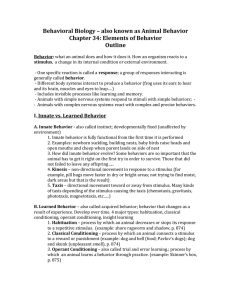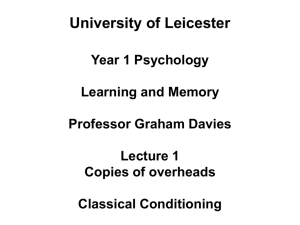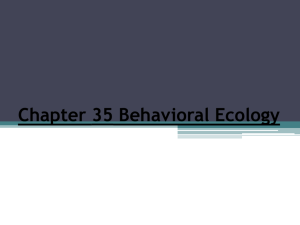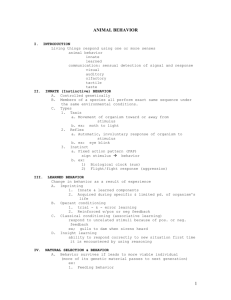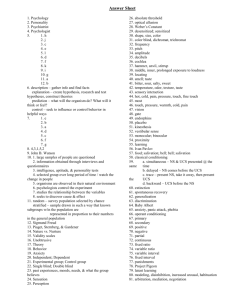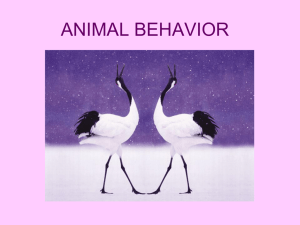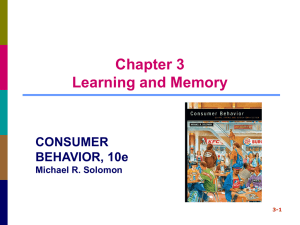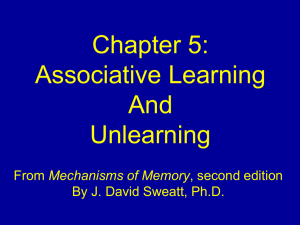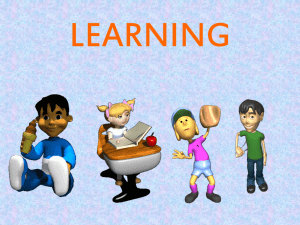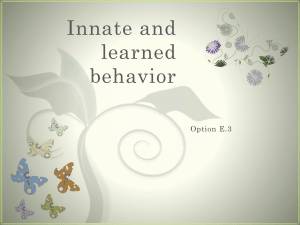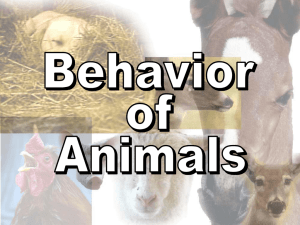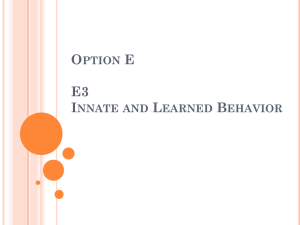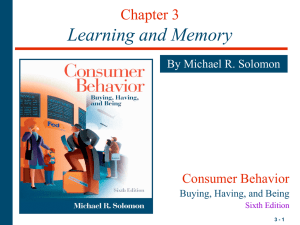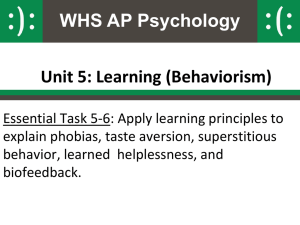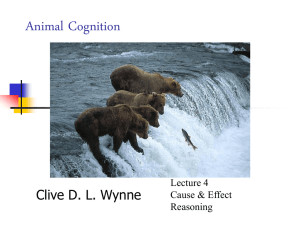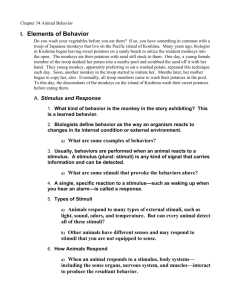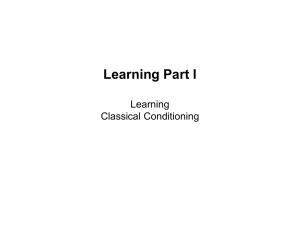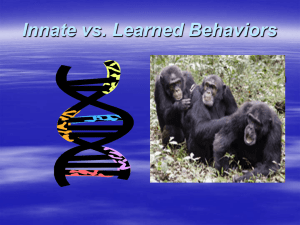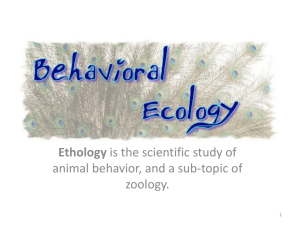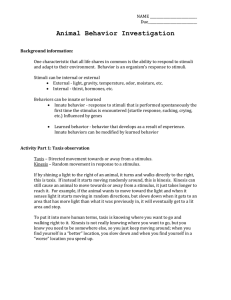E3 Innate and learned behaviour trs
advertisement
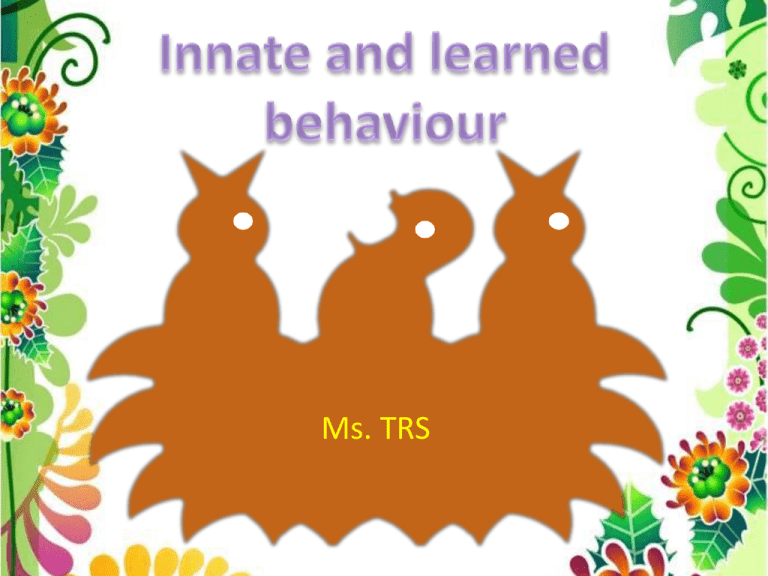
Ms. TRS Innate vs. Learned Behavior Innate: •Inherited from parents Learned: •Not inherited from parents, dependent on the environmental context •Not controlled by genes •Controlled by genes •Develops by response to an •Developed by natural environmental stimulus selection •Increases chance of survival •May or may not increase chance of survival and and reproduction reproduction •Examples: Migration of Black cap birds •Examples: Learning to drive a car Hunting instinct in some Learning a language dogs A spider spinning web Innate behaviour in invertebrates • Taxis and kinesis are two terms used to describe innate motor behaviors in invertebrate species. Taxis: A taxis is a directed response to a stimulus. There are positive and negative taxes. e.g. chemotaxis, phototaxis, gravitaxis, rheotaxis, thigmotaxis, thermotaxis Kinesis:A movement in response to a non-directional stimulus, like humidity. The rate of movement depends on the intensity of the stimulus rather than its direction. Some Examples of Types of Learning • Imprinting :Young ones become attached to their mother. Helps in survival because the young ones staying close to their mother get protection and food. Example: duckings following their mother • Imitation Development of “templates” for behavior* – Inherited or innate skill sets that are developed with exposure to target response • e.g. birdsong • Conditioned responses – Classical Conditioning* – Operant Conditioning Classical Conditioning • IB Objective: Outline Pavlov’s experiments into conditioning of dogs. (E.3.5) Classical Conditioning: Definitions Unconditioned Stimulus (UCS): a stimulus that has the ability to produce a specified response before conditioning begins. (FOOD) Unconditioned Response (UCR): response produced by the UCS. (SALIVATION PRODUCED BY FOOD) Conditioned Stimulus (CS): an initially neutral stimulus that comes to produce a new response because it is associated with the UCS. (BELL) Conditioned Response (CR): the response produced by the CS. (SALIVATION IN RESPONSE TO BELL) Classical Conditioning Ivan Pavlov Conditioning Trial: Salivation Test Trial: Salivation Other types of learning… • IB Objective: Outline the role of inheritance and learning in the development of birdsong in young birds. (E.3.6) Birdsong • Birds have species-specific sounds that are inherited. However, there is also a component of learning to the song that a bird will produce as an adult. – If a male bird is kept in isolation in a laboratory, he will produce a very crude (but species-specific) song, according to an inherited template. – Furthermore, if deafened, the song will be even more crude. Practice Questions • Distinguish between learned and innate behaviours. • Describe the design of an experiment which measures either taxis or kinesis of an invertebrate animal.
